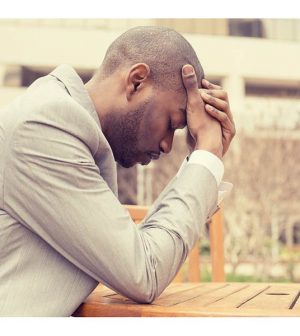- Navigating Your Midlife Crisis: Embracing New Possibilities
- City Raccoons Showing Signs of Domestication
- Mapping the Exposome: Science Broadens Focus to Environmental Disease Triggers
- One Week Less on Social Media Linked to Better Mental Health
- Your Brain Changes in Stages as You Age, Study Finds
- Some Suicide Victims Show No Typical Warning Signs, Study Finds
- ByHeart Formula Faces Lawsuits After Babies Sickened With Botulism
- Switch to Vegan Diet Could Cut Your Greenhouse Gas Emissions in Half
- Regular Bedtime Does Wonders for Blood Pressure
- Dining Alone Could Mean Worse Nutrition for Seniors
An Expert Offers Tips on Long COVID Care

If you’re one of the many people with long COVID, an expert offers advice on how to tackle it.
The first step: Give yourself time to recover.
“One thing we have seen repeatedly is that patients push themselves too hard while trying to recover. It makes sense. Everyone is so eager to ‘get back to normal life’ after their infection and isolation,” said Dr. Greg Vanichkachorn, director of the COVID Activity Rehabilitation Program at the Mayo Clinic in Rochester, Minn.
But rushing back into your daily routine can trigger discouraging flares of long COVID symptoms such as fatigue, shortness of breath and muscle aches.
“The fastest way to recover is to take things slow and easy at first, then try to gradually increase your activities,” Vanichkachorn said in a clinic news release.
It’s important to keep hydrated and eat healthy by following a balanced, Mediterranean-type diet (including vegetables, legumes, fruits, nuts, fish and olive oil) and avoiding processed and high-fat foods.
When exercising, initially focus on resistance workouts rather than activities that boost the heart rate like walking and cycling, Vanichkachorn said.
Cardiovascular exercise “is the most difficult type of activity for patients with post-COVID syndrome. Instead, start with resistance activities, such as working with a resistance band, light free weights, yoga or Pilates,” Vanichkachorn said. “Once this goes well, you can throw in some light cardio.”
Good sleep is also key to recovery. Make sure your bedroom has good air circulation and is slightly cooler than during the day. Eliminate or minimize the use of electronics before bedtime, don’t consume caffeine after lunch and don’t exercise within two hours of bedtime, he advised.
It’s also good to create a normal daytime schedule by waking up at a certain time, eating regular meals and having a routine bedtime.
“About a third of patients have prolonged troubles with taste and smell after acute COVID infection. Fortunately, most patients will get better within six months, and even more within 12 months,” Vanichkachorn said. “If you want to speed things up though, I recommend olfactory retraining,” also known as smell retraining.
“Fortunately,” he concluded, “the ideal recovery from post-COVID syndrome starts with you in your home.”
More information
There’s more on long COVID at the U.S. Centers for Disease Control and Prevention.
SOURCE: Mayo Clinic, news release, April 7, 2022
Source: HealthDay
Copyright © 2025 HealthDay. All rights reserved.










